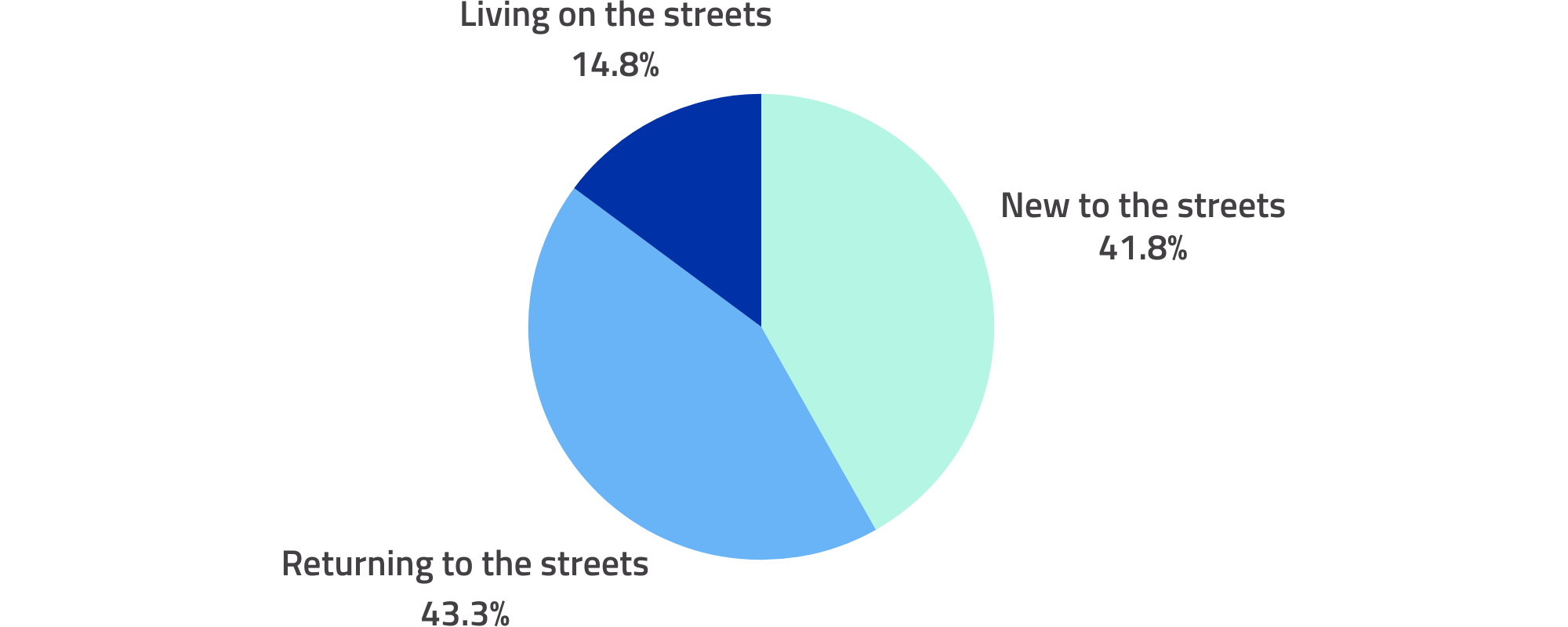
We look, with interest, at the CHAIN figures for London and Westminster every quarter.
This helps us to understand trends and patterns in rough sleeping so that we can use our resources as effectively as we can. The figures include 3 main categories of people sleeping rough: those who are new to the streets, those who have returned to the streets having been in services; those living on the streets long term.
The Connection’s main focus of attention is intermittent and long term rough sleepers in Westminster. These groups have either accessed a service system which hasn’t worked for them, or have chosen not to take up service offers over time.
What do the CHAIN figures show?
Rough sleeping has increased across the board in London and, specifically in Westminster. Although there’s lot to say about the London picture, I’m going to home in on Westminster where we are based.
Despite a lot of work from all members of the Westminster Homelessness Partnership, rough sleeping increased in Q4 (Jan – March 2024). It’s tough out there for everyone. 850 people had contact with rough sleeping outreach team members in Westminster. This is an increase of 168 on this time last year.
32% of our 850 have more than one support need identified. The most prevalent are mental health, drugs and or alcohol and needs are greater amongst those living on or returning to the streets. A few other significant points in the CHAIN figures are that:
This tells us that people are coming onto the streets considerably quicker than we can get them off and this situation is getting worse quarter on quarter. Also, the support needs of clients on the streets are high, which creates further barriers to them moving into a settled, permanent home.
How can I make a difference?
This is why we want to see greater access to long term accommodation and flexible mental health and addiction treatment. To find out more about our priorities for politicians and policy makers, see our The Manifesto asks.


